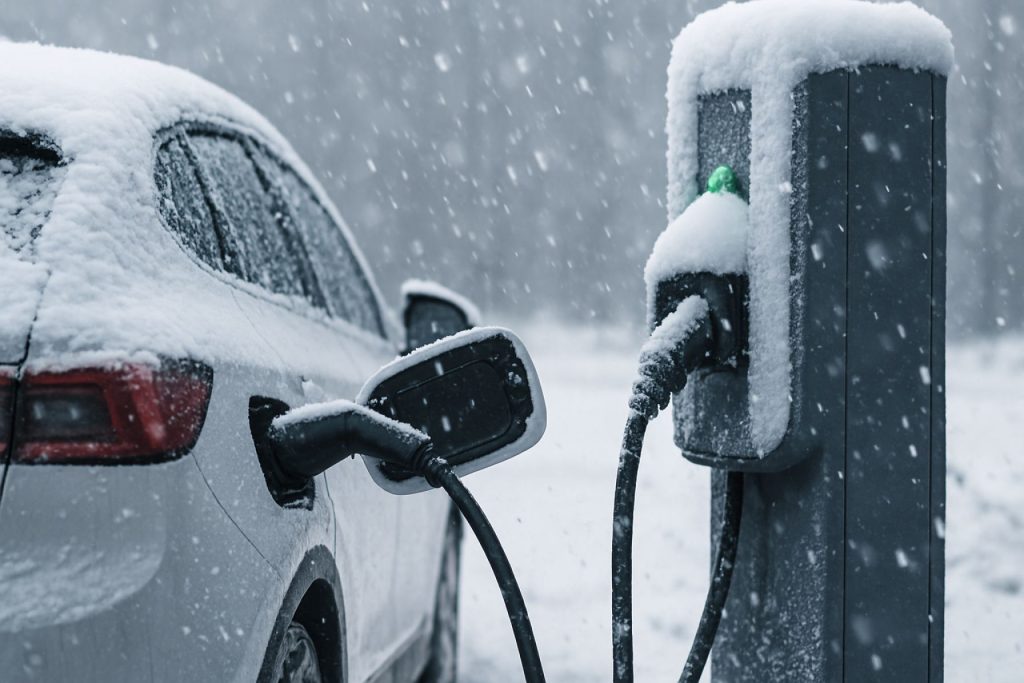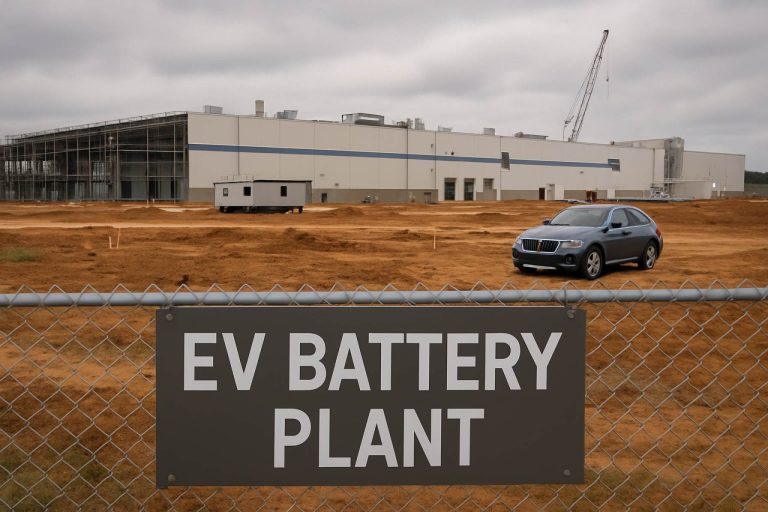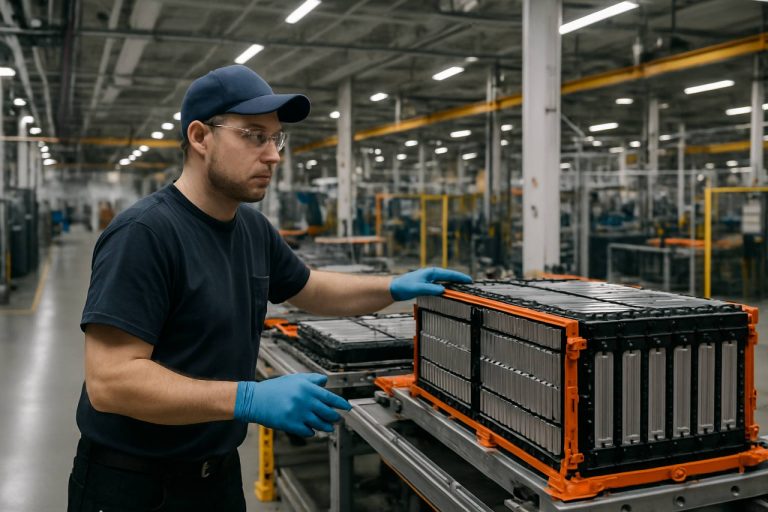
- Electric vehicle (EV) adoption is growing quickly in the U.S., with over 3 million EVs on the road.
- The availability of public charging infrastructure is lagging, especially fast chargers suitable for commuters and long-distance travelers.
- Over 80% of current charging stations are slow Level 2 chargers, insufficient for rapid “refueling” needs.
- Federal funding cuts and policy shifts have slowed EV charger expansion, creating uncertainty for businesses and consumers.
- Major automakers and private companies face challenges with installation costs, permit delays, and unreliable chargers.
- Rural areas remain underserved, intensifying range anxiety and limiting EV access beyond major cities.
- The success of the electric transition relies on building a robust, accessible, and efficient charging network nationwide.
https://youtube.com/watch?v=gJYDHbYLCpM
Electric vehicles surged onto American roads, their quiet engines a promise of a cleaner, faster future. Today, that promise flickers on the edge of a blackout.
Where a jolt of optimism once powered the nation’s embrace of electric mobility, reality now bites at the wires: public charging infrastructure lags alarmingly behind. Recent federal shifts have slashed funding for new EV chargers, leaving many drivers staring at a daunting calculus. With more than 3 million EVs on U.S. streets and sales continuing to climb, the race to keep those cars fueled has never felt more precarious.
Step into a rest stop on any major interstate, and the scene is changing. Charging stations—once gleaming symbols of progress—are now hotspots for frustration. Lines snake around parking lots, tempers flare, and screens blink error codes as stressed-out drivers reload their apps in search of power.
The numbers are revealing. According to the U.S. Department of Energy, there are about 65,000 charging locations serving over 160,000 chargers. That sounds like progress, but more than 80% of these are so-called Level 2 chargers—slow and best suited for long stops or overnight plugs. For commuters or long-distance travelers needing quick replenishment, truly fast chargers remain vastly outnumbered.
Private companies like Tesla, ChargePoint, and Electrify America race to fill the gap, expanding their networks and upgrading technology. Yet profits prove elusive; high installation costs, permit delays, and patchwork regulation slow every step. Even in California—the heartbeat of the EV scene—news stories chronicle broken chargers and out-of-order stations. Rural America faces even steeper odds, with vast stretches of highway offering little safety net for those whose batteries dip below half.
Policy churn compounds the challenge. Changes in federal priorities create uncertainty for local governments and entrepreneurs alike. Big automakers pause aggressive rollouts to see if their customers can reliably “fill up” outside of the garage. Meanwhile, countries like China press ahead, building charging infrastructure at a staggering pace and leaving the U.S. at risk of falling behind in the clean tech race.
For consumers, the takeaway is clear: before committing to an EV, mapping out your region’s charging desert—or oasis—is essential. Dreaming of road trips? Think practically. Residents in major cities may fare well, but those beyond urban cores must scrutinize the landscape.
The electric revolution hasn’t failed; it’s simply revealed its most critical battleground. If America wants to sustain its EV ambitions, the national conversation must shift from horsepower to kilowatt-hours, and from sleek designs to the humble charger. Without a robust, reliable, and widely accessible charging grid, the journey to a zero-emissions future may stall just short of the on-ramp.
Curious about the evolving energy landscape? Explore more transportation insights at nytimes.com and stay informed at nhtsa.gov—because the future of driving, as ever, is plugged into what happens next.
The EV Charging Crisis: What Mainstream Headlines Won’t Tell You—and What Every Driver Needs to Know
The Silent Challenge Behind America’s Electric Vehicle Boom
The narrative around electric vehicles (EVs) often touts clean energy, quiet motors, and rapid innovation—but the real-world challenges, especially around public charging infrastructure, go much deeper than recent headlines suggest. Here’s what the source article didn’t fully cover, with insights you need for both today and tomorrow.
—
Key Additional Facts & Insights
1. Public Charging Infrastructure: The Hard Numbers
– The U.S. had over 3.2 million EVs on the road by early 2024 (Source: U.S. Department of Energy).
– Only 13% of U.S. charging stations are DC Fast Chargers—the rest are slower Level 2 chargers best for overnight or long stops.
– Comparatively, China has installed more than 1.8 million public charging stations, outpacing the U.S. by a huge margin (Source: International Energy Agency).
2. EV Ownership: Real-World Use Cases & Life Hacks
– Home Charging Is King: According to J.D. Power, over 80% of U.S. EV owners rely primarily on home charging. For apartment dwellers, workplace or public charging becomes critical.
– Hidden Fees: Public chargers frequently add session fees or idle fees after charging is complete. Always check your app for real-time pricing.
– How-To Hack: Use apps like PlugShare or ChargePoint to map reliable charging spots, read recent reviews, and avoid non-operational chargers.
3. Comparisons: Tesla Supercharger vs. Public Networks
– Tesla’s Edge: The Supercharger network boasts over 19,000 fast charging locations, with a reputation for high reliability and fast speeds (up to 250kW).
– Open Access: Tesla began opening select Superchargers to non-Tesla vehicles, but adapter compatibility, and network congestion remain barriers for many.
– Other Networks: Electrify America and EVgo offer fast chargers but are often criticized for software glitches, maintenance gaps, and patchy rural coverage.
4. Common Frustrations: Controversies & Limitations
– Charger Reliability: Recent studies from J.D. Power & Plug In America found that nearly 1 in 4 public fast charging attempts fails due to broken units, payment errors, or app glitches.
– Permitting Delays: Installation can stall for months waiting for permits or grid upgrades.
– Equity Problem: Rural and lower-income areas have far fewer chargers per capita, increasing the risk of “charging deserts.”
5. Market Forecasts & Trends
– Expansion Plans: The Biden administration’s NEVI program originally earmarked $7.5 billion for charging infrastructure, but federal budget shifts have delayed or reduced this funding.
– Private Investment: Automakers like Ford, GM, and Hyundai are forming alliances to build more fast chargers, betting on a broader network as key to future EV sales.
– Tech Upgrades: Companies are piloting battery-swap stations, wireless charging, and ultra-fast (350kW+) chargers. However, widespread deployment is years away.
6. Security & Sustainability
– Cybersecurity: EV chargers, being internet-connected, face hacking risks: malware, payment data theft, and grid attacks have experts calling for stricter security standards.
– Green Energy Paradox: While EVs reduce tailpipe emissions, the clean impact is maximized only if chargers use renewable energy sources—something not yet universal across networks.
7. Real Questions Drivers Have—Answered
– How much does public charging really cost?
Fast charging can range from $0.25 to $0.59 per kWh, sometimes costing more than gasoline for less efficient models. Watch for idle fees.
– Can you road-trip nationwide in an EV?
Technically yes, but planning is essential. For rural or cross-country trips, stick close to Interstate corridors—and always have a backup charger in mind.
– Is home charger installation expensive?
Level 2 home charger installs typically cost $800–$2,000 including equipment and wiring upgrades, but tax credits may offset costs.
—
Pros & Cons: A Quick Overview
Pros:
– Lower running costs & fewer moving parts to maintain
– Tax incentives (federal up to $7,500, plus state/local rebates)
– Quieter, cleaner drive with instant torque
Cons:
– Charging infrastructure lag, especially outside cities
– Range still trails gasoline for most models
– Higher upfront cost for new vehicles
– Cold weather can reduce range by 30% or more (Source: AAA)
—
Actionable Recommendations & Quick Tips
1. Map Out Your Commute: Use reliable apps to pre-plan charging stops before purchasing or leasing an EV.
2. Ask Local Utilities: Many offer rebates and discounted rates for off-peak charging—contact your provider.
3. Check for Tax Credits: Visit irs.gov for up-to-date incentive programs.
4. Test Public Charging: Before you buy, “test charge” at public stations near you to assess local reliability.
5. Stay Informed: Track regulatory changes and launches at trusted sites like nytimes.com and nhtsa.gov.
—
The Bottom Line: Don’t Let Range Anxiety Derail Your EV Dreams
America’s electric vehicle revolution faces a crossroads: the hardware is ready, but the “fuel”—our charging grid—needs urgent attention. New investments, smart policies, and consumer vigilance are the keys to unlocking a true zero-emission future.
Final tip: Treat EV ownership like a cross-country trek—success comes to those who plan a few steps ahead, and who always keep a charger (and a contingency) in their back pocket.



